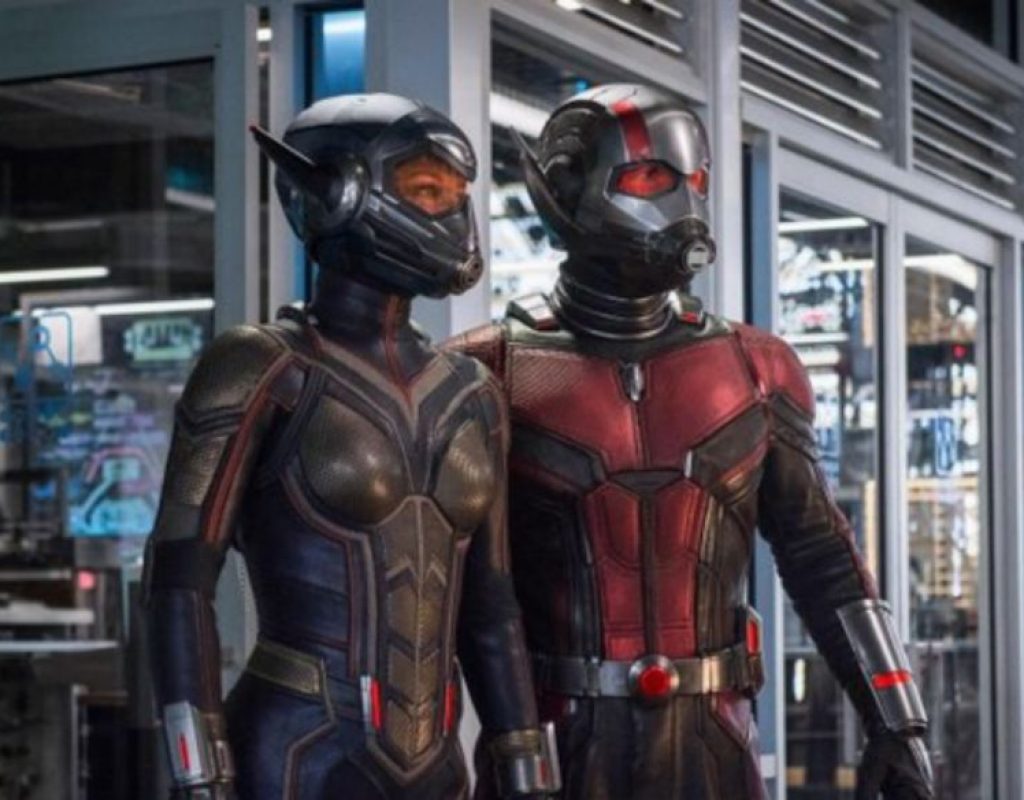Craig Wood, ACE has worked on a list of hit films that put him in the upper echelon of blockbuster film editors: three of the Pirates of the Caribbean movies, both Guardians of the Galaxy movies (and probably the next one), Tomorrowland, Rango, A Cure for Wellness, and The Great Wall, among many others. His latest is Ant-man and the Wasp, co-edited with Dan Lebental.
Art of the Cut is brought to you by our friends at Frame.io.Video collaboration for the 21st century Read all of the AOTC interviews or learn more about Frame.io |
I’d previously interviewed Craig for the first Guardians movie. He graciously agreed to another interview while rapping up duties on Ant-man and the Wasp.
(This interview was transcribed with SpeedScriber. Thanks to Martin Baker at Digital Heaven)
HULLFISH: I have some scenes from the studio. Any comment on any of the ones I have access to?
WOOD: I co-edited with Dan Lebental. The kitchen scene fell to him, and that scene with Luis in the office was also him. The car chase was me.
HULLFISH: The pacing of that car chase can be affected by the sound effects. Are you adding those as you picture cut?
WOOD: Well, you know the sounds FX I put in get modified by the sound crew of course, but I work with an extensive soundtrack as I’m cutting. Ever since Guardians 2, I’ve been cutting with 7.1 sound, so I’m mixing as I go as if it was in the cinema. And that means we can preview very easily and we can continue working on the cut right up until any screening without having to allow time for a temp mix.
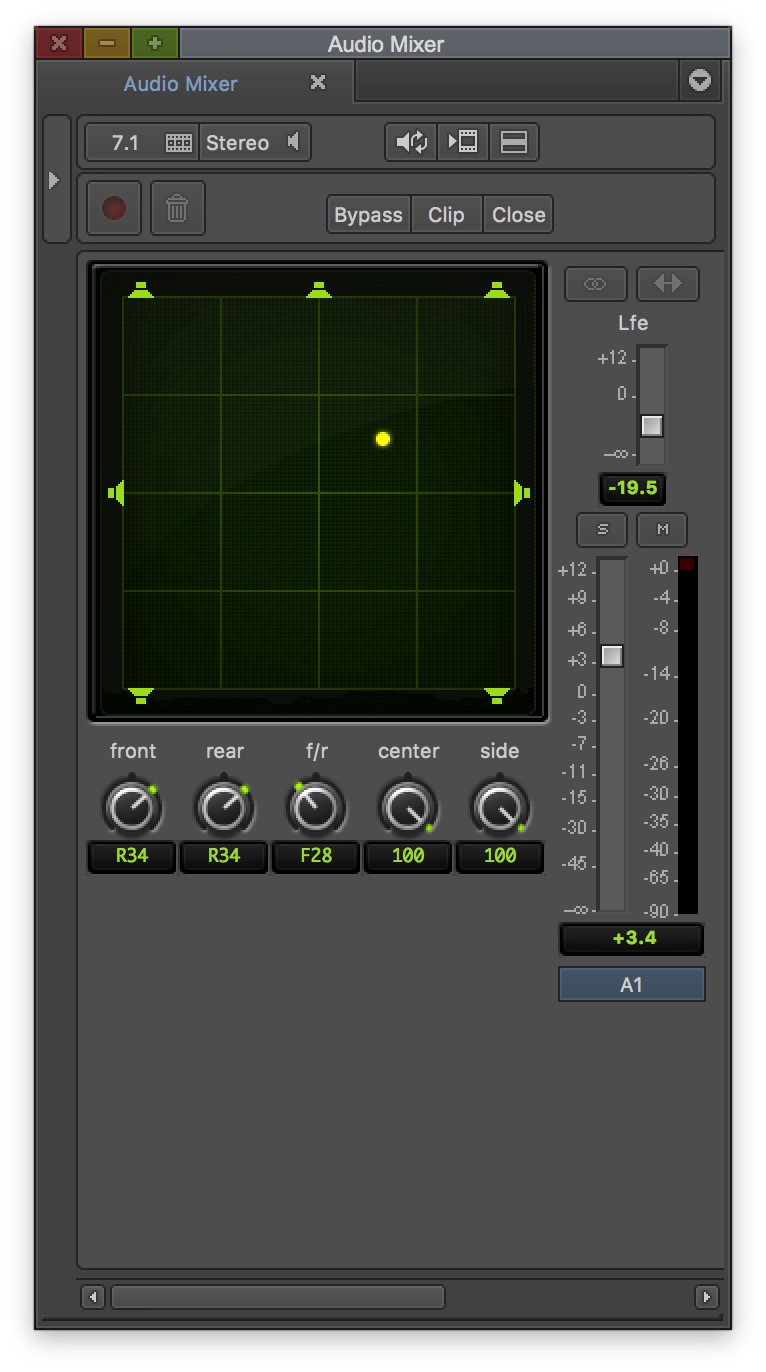 HULLFISH: So, you’re designing that 7.1 sound work in Avid? Are you handing that over to your assistants? Or is that something you like to do yourself?
HULLFISH: So, you’re designing that 7.1 sound work in Avid? Are you handing that over to your assistants? Or is that something you like to do yourself?
WOOD: Yes, in Avid and some of it I give over to the assistants, but the majority of it I do myself because I find that faster and I find it part of my creative process of cutting the scene. It’s always been interesting how as you put sound in, especially in fights and anything that’s going to have a sound that’s repetitive, like footsteps — walking across cuts — getting that timing right. So often it’ll look right and then you put all the footsteps in and there’s this misstep and it’s really annoying to me. I can remember back in the Pirates days putting all the sword clangs in and it would inform the rhythm of the fight.
HULLFISH: Exactly.
WOOD: So I do as much sound work as I possibly can as I go. Part of the first cut on any scene that I do is doing a full 7.1 sound pass and we just carry that for the rest of the movie. We can augment it and tweak it and the director can comment on it — we can experiment, just like we do with the picture.
HULLFISH: So are you going to edit your next movie in Atmos?
WOOD: We joke about that! I don’t think so, though, as much as I would love to because we final mix them all in Atmos, so having figured a lot of things out during the cut it makes the dialogue with the mixers really efficient and clear because I know exactly where I’d like to put things and then if they don’t agree we can discuss, but they have a template to start from.
These films — they’re involving because of the space we’re existing in and the sound creates that. I love to think about the spatial things as I’m cutting the picture.
HULLFISH: On the action scenes, do you do a lot of the picture cutting M.O.S. or on mute?
WOOD: When you’re getting the big action scenes like the car chase, and I imagine Dan did this with the kitchen fight, you tend to cut that M.O.S. first and then you add specific things in — sound wise — and maybe you adjust some stuff. I tend to wait quite a long time before I put music into the scene because I’d rather figure out what my own rhythm is for the action and not be pushed in a direction by music.
HULLFISH: When you’re cutting without sound to begin with and then you add the sound effects what are you finding happens to your edit?
WOOD: Well there’s a lot of rhythmical stuff going on. If you’re delivering an explosion moment or something, once you put the sound in, it can expand or contract. It can inform whether you’re fat or under-serving something. It’s a whole other dimension that your senses have to take in, so it does change how long you want the thing to be.
HULLFISH: You’ve worked on a lot of films where the scope of the film requires multiple editors. How are you and Dan Lebental interacting and sharing the workload on this film?
WOOD: Well we had lots of great dialogue about plot and character early on: things that we were concerned with and we take those to Payton Reed the director and discuss them with him. We just had lots of dialogue.
HULLFISH: And how are you determining which scenes are edited by which person? Is it just: you take one and I take one?
WOOD: It started out like that but it weirdly fell — and I would not normally do this — but it fell that Dan was mostly the first half of the film and I was mostly the second half of the film.
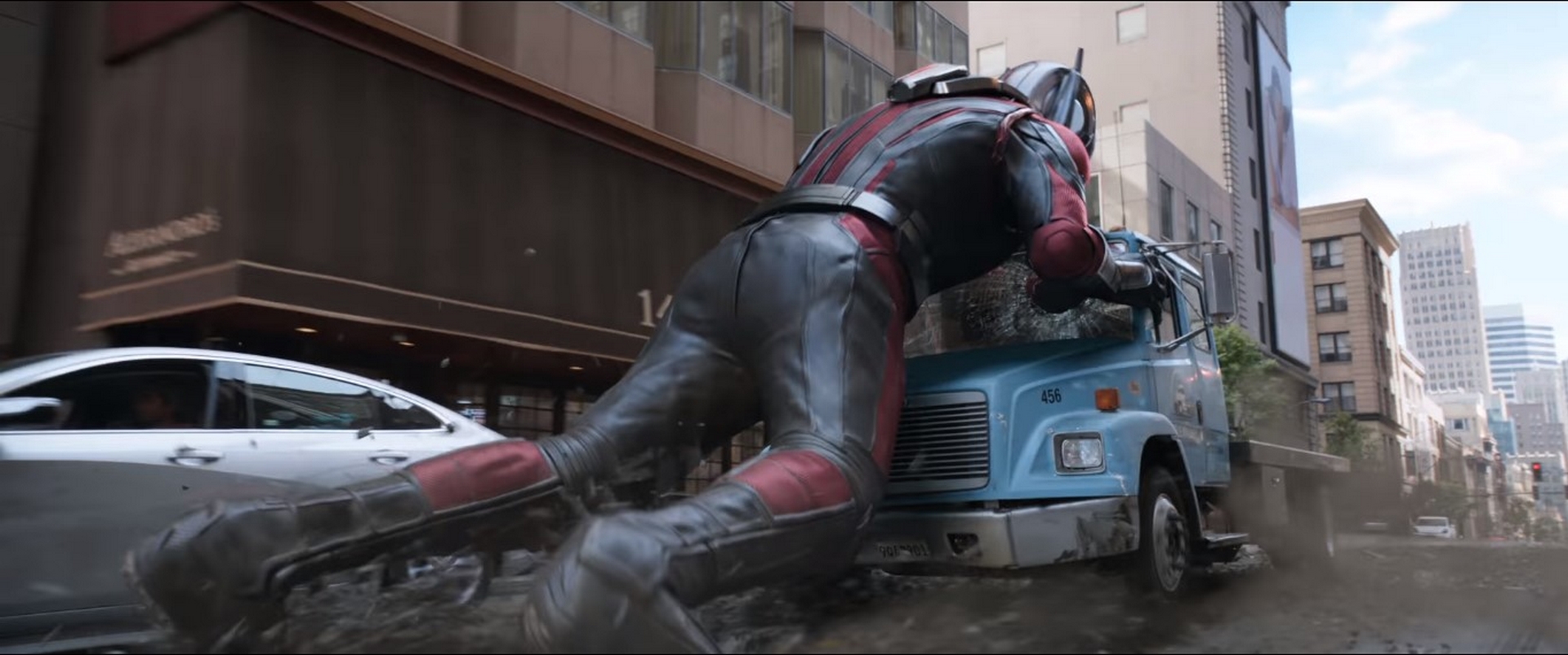 I started the film about two months before Dan, so I was handling a lot of previz before they even started shooting. And the biggest chunk of that previz was the car chase — the whole third act car chase. So it made sense that I shepherded that the whole way through the film because I was very familiar with all the bits and pieces that went with that. We both have a few landmark scenes in each other’s halves but mostly Dan’s the first half and I’m the second.
I started the film about two months before Dan, so I was handling a lot of previz before they even started shooting. And the biggest chunk of that previz was the car chase — the whole third act car chase. So it made sense that I shepherded that the whole way through the film because I was very familiar with all the bits and pieces that went with that. We both have a few landmark scenes in each other’s halves but mostly Dan’s the first half and I’m the second.
HULLFISH: How do you interact with the previz team? Did you work with somebody like The Third Floor?
WOOD: It was The Third Floor and they are absolutely amazing. It’s incredible how quickly they achieve versions of the shots and how creative they are. A lot of the ideas for shots come from them. They get a pass to construct a scene so Peyton (director, Peyton Reed) has something that he can react to and ask for adjustments and tweak. So there’s a lot of creativity that comes from previz and the dialogue between the picture department and previz every day. We’re always talking and asking, “Could I have a close up of this for this moment?”.
HULLFISH: I just talked to those guys recently. They have their own editors. How does that play out with your relationship with them?
WOOD: Well it depends on the scene. Because I was there for a good chunk of time in Atlanta while the car chase was being figured out, I took over the cut of that from their editor. It changed quite a bit in my hands. I find that the previz department tends to over-sell moments. They are not into abbreviating. They want to make it very clear what’s happening and then it’s up to us to say, Well there’s a simpler, shorter, more efficient way of telling this same moment.
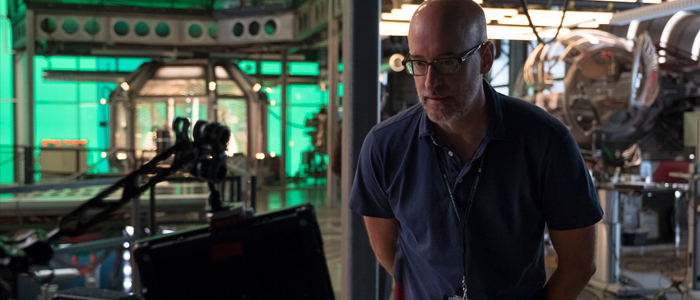
HULLFISH: Let’s talk a little bit about your relationship with the director and how are you guys interacting once you’ve got an assembly ready.
WOOD: We have a lot of sessions where it’s the three of us discussing what’s going on. Then the director might work with me for a while on a particular scene and then go and work with Dan for a while and leave me notes to work on while he’s working with Dan. Our schedule was extremely compressed in post-production. We had some issues in the film that we needed to solve that took a lot of man-hours to do. We were pretty much separate at the end.
HULLFISH: Just because you need to get more done.
WOOD: That’s right. There was just a. mountain of work.
HULLFISH: Tell me about the schedule for the movie.
WOOD: I was supposed to arrive three weeks before the start of the shoot, but just as I arrived they pushed the start of the shoot by three weeks. So I had six weeks before shooting started to work on the previz. I’d never worked with Peyton before, so that was a great time to get to know him and him get to know me.
Dan was finishing Spider-man Homecoming, so he joined us just as we started shooting.
The shooting schedule was fine. The bad part was on the post-production end. I think it’s one of the shortest of the Marvel post schedules. There were changes to the cut happening right up until the very end, and visual effects were trying to chase that. That was really tricky to negotiate.
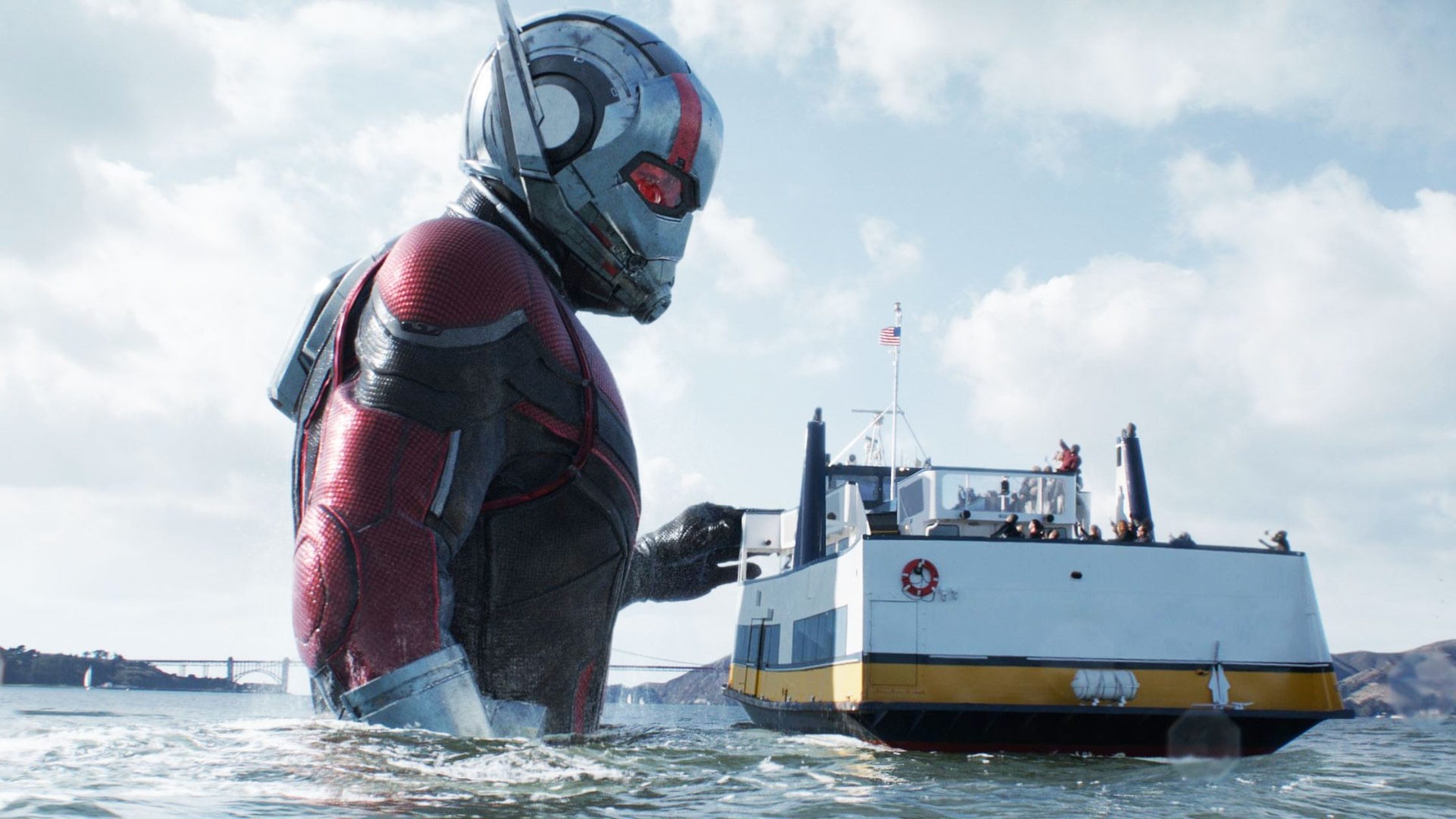 HULLFISH: Because of the turn-overs to VFX?
HULLFISH: Because of the turn-overs to VFX?
WOOD: Yeah, we had turnovers right up through the final mix. It was insane. And we were still previewing through the final mix. I normally spend 100 percent of the final mix on the mix stage. This is the first movie where I wasn’t able to do that just because of the compressed schedule. We had too much to do.
HULLFISH: When was principal photography over? Then when did you lock and go to the next stage?
WOOD: We left Atlanta at the end of October last year (2017). We showed the studio for the first time sometime in February, and we had four or five previews after that. There were also three sets of reshoots to adjust story and character problems that we were encountering.
HULLFISH: What were some of the issues in story, character or structure that needed to be addressed?
WOOD: As is so often the case in any film, it’s all the exposition stuff: setting up our characters and their backstory and figuring out just how much we need to know about their backstory. It’s always the exposition. Audiences were having a little bit of a problem understanding the quantum realm. And it was figuring out just how much or how little of the quantum realm we were going to show. How much backstory they needed to know about what happened to Michelle Pfeiffer’s character — the Janet Van Dyne character — in the quantum realm. We actually ended up simplifying that a little bit because too much information raised too many more questions. So we took a bunch of stuff out and just gave a flavor of it. That seemed to be more satisfying.
HULLFISH: And that was something that was easier to understand with a viewing audience.
WOOD: Definitely. I swear by the preview process. I’m not a big fan of the number that you chase though.
HULLFISH: The test score that the preview company generates from polling the audience….
WOOD: Right. But watching it with an audience? It’s the only way you can refresh your own reaction to the material after watching it so many times.
HULLFISH: I just talked to Eddie Hamilton who said that Chris McQuarrie swears by previews and loves them. He said, “I love having water thrown in my face”.
WOOD: There’s always huge surprises. There are the pleasant surprises that some things play even better than you’d hoped, and then there are the things that throw people. Some of them are really weird and you ask, “Why are they thinking that?” And we have to figure it out.
HULLFISH: Are there things that you do to maintain your objectivity as you cut for as long as you did?
WOOD: It is the audience thing. The first person I show a scene that I’ve cut to is actually my first assistant, Simon Morgan, who’s been with me on every film that I’ve cut. I know exactly how to read his reaction. He has great sensibilities, so I know what to take with a grain of salt and when to think, “Oh he’s right.” Then of course it’s the director and then it’s the studio executives: Kevin Feige and Louis D’Esposito and Victoria Alonso, and they are a fantastic audience and they love to not get too involved until they get to see what the director’s cut the first time. So they’re just reacting honestly to it as if it’s a movie.
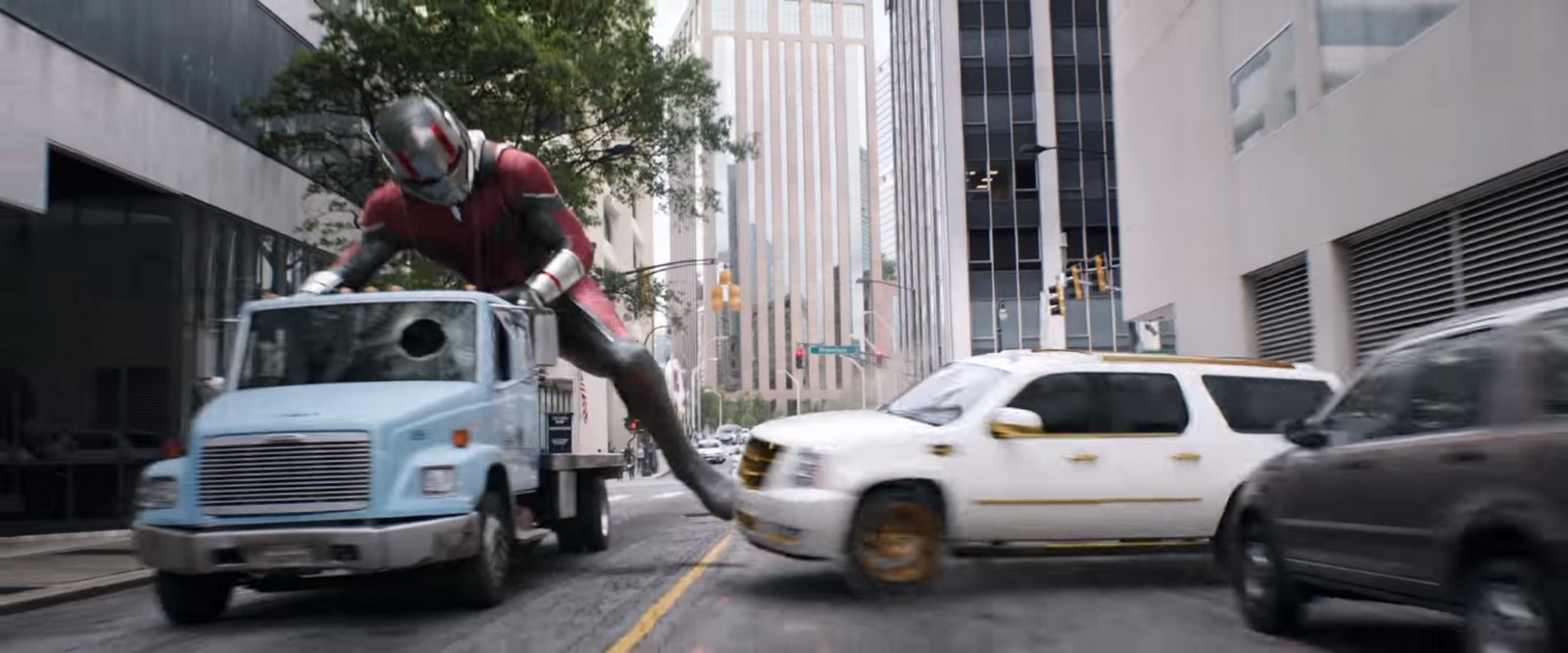 HULLFISH: I’ve heard that Feige is just fantastic at notes and useful improvements.
HULLFISH: I’ve heard that Feige is just fantastic at notes and useful improvements.
WOOD: I love working with him. He’s so clear. He’s consistent. He stays on path. He comes up with radical left-field solutions to problems. He’s never afraid of the amount of work that might mean with reshoots or whatever.
HULLFISH: Earlier in my career, I would have thought that that interference would have been unwelcome, but the more I speak to experienced editors, the more it appears to be welcome.
WOOD: Well it depends on the executives. I’ve had both kinds and I’m just here to say the Marvel guys are fantastic.
HULLFISH: Tell me about your approach to a scene. When you are looking at a blank timeline do you approach things differently when you’re looking at more of a dialogue scene than an action scene or do you approach them the same way?
WOOD: There’s a bunch of different ways that I approach the work. An action scene I would tend to cut without sound and obviously a dialogue scene with. I use different ways to keep it interesting for myself. I’ll tackle some scenes differently. Sometimes I’ll put the master down and start cutting into that. Sometimes I’ll put key things that I love as place holders, join them together with a master or a close up or something and then start manipulating. It’s about going through all the dailies and deciding what the best version of every moment is and then which ones work best together. Other times I’ll start by creating a sort of moody atmospheric sound environment for the whole thing to just sit in. That’ll just play as I cut. There’s a lot of different ways.
HULLFISH: I love the idea that you are not choosing the same method every time.
WOOD: Gotta keep it interesting for yourself.
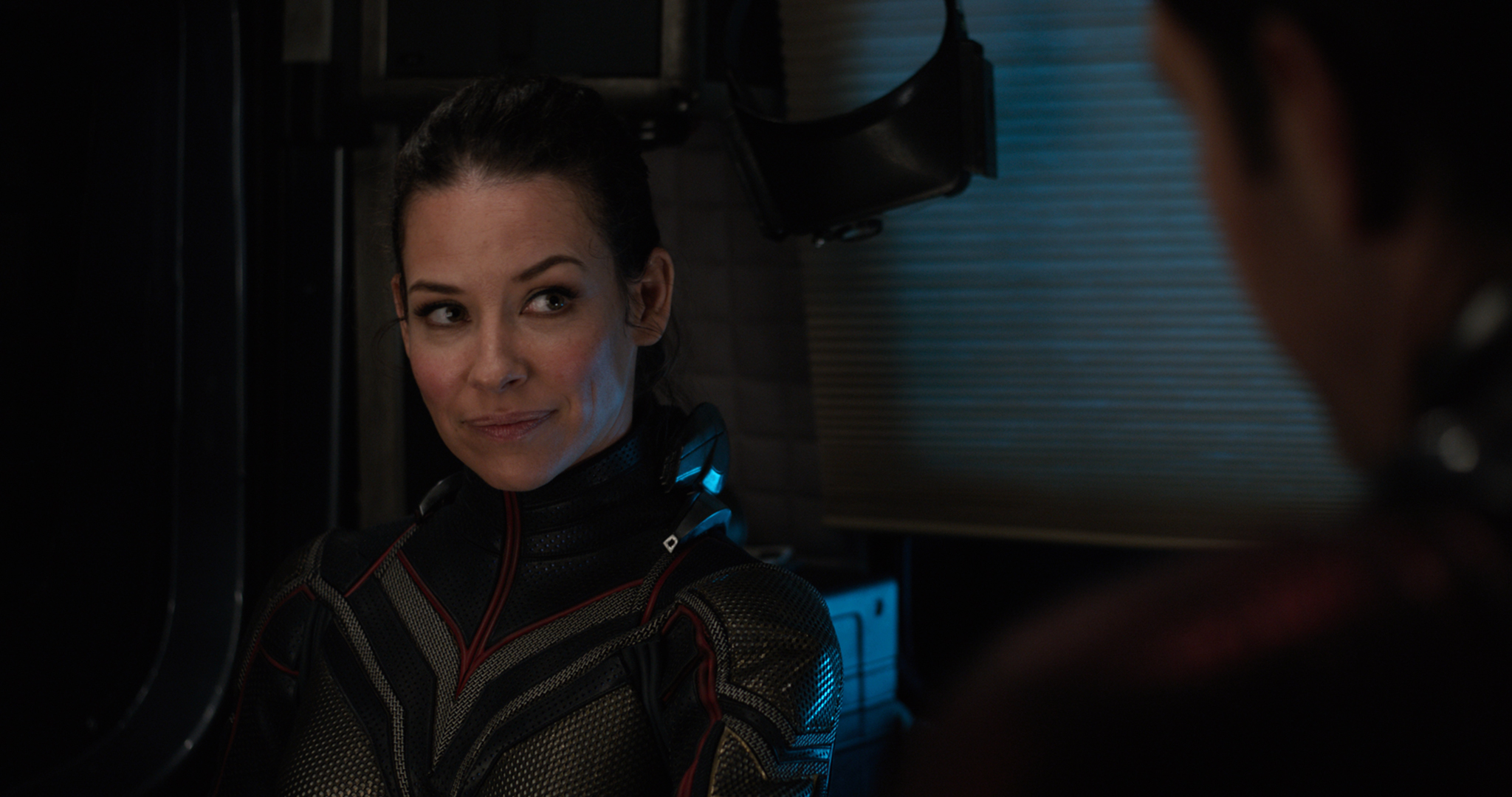
HULLFISH: When you’re in the daily process when you’re getting dailies everyday, do you try to watch all of the dailies at that point or do you just commit to watching all of the dailies eventually?
WOOD: It’s eventually because I actually like to start cutting so I sorta know what I’m looking for as I watch the dailies. I’ll do a sort of rough build of the shot construction for the scene and then I’ll watch the dailies and then I’m looking for the best pieces to achieve the shot construction that I think is appropriate for the scene.
HULLFISH: I like that idea myself. Sometimes you don’t know what you’re looking for in dailies until you’ve kind of got a scene cut, then with a cut, the dailies become new to you and make more sense in the context of what you’ve already roughed in.
WOOD: And you know it depends on how much coverage there is for an individual scene. If the coverage is fairly contained then it’s fairly clear what the shot construction will be. The director might have constructed a nice camera move for a particular moment so that’s a landmark spot that you try to work in. Sometimes I just go to the last take or the earmarked takes by the director and then just do a very quick edit of the scene: I want to be on a close up here. I want to be out wide here. They walk over here so I’ll be on this tracking shot. Then go through all the dailies and make it the best it can be.
HULLFISH: What is drawing you to specific performances and how are you choosing those performances? A and B comparisons?
WOOD: Yes yes and yes. There’s lots of A and B comparisons. It’s remarkable how often there is a stand out take though, or stand out sections where you just say, “That’s the moment.” It’s clearly the moment. A lot of your personal taste comes into it. I tend to shy away from the broader performances. Sometimes, especially for a comedy like Ant-man, we have to lean towards a slightly broader performance. I’ll usually shy away from it initially and then maybe it will become clear that it needs to be a little broader.
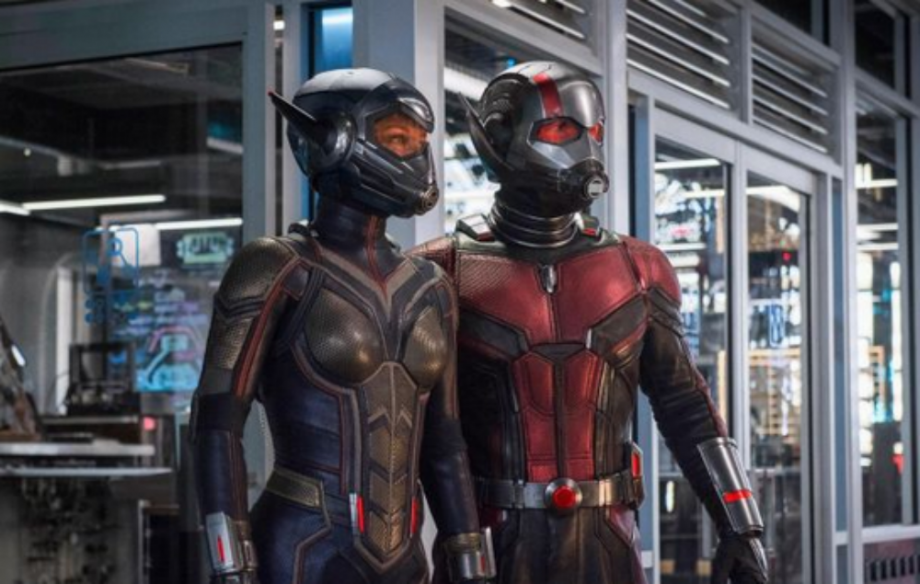 HULLFISH: When you’re going over those performances and a director questions your choice, do you learn something either about working with that particular director or learn something about your own personal taste when those choices are questioned?
HULLFISH: When you’re going over those performances and a director questions your choice, do you learn something either about working with that particular director or learn something about your own personal taste when those choices are questioned?
WOOD: Yes. It is a very personal journey. Whenever you’re working with other people it’s about collective taste and choices, it puts in question your own taste, their taste. This is my first time working with Peyton so I had to learn his tastes. It’s quite different for me than when I’m working with Gore Verbinski, because I’ve worked with him for many, many years, so our tastes — Gore’s and mine — have grown along a similar path. So that’s a little more straightforward or easier. There’s always surprises, but with Peyton I had to learn that. It’s always a little surprising, the things that bug a director performance-wise and it’s sometimes surprising the things they particularly like and it’s informative because they directed the scene to be a particular way, so those moments might change some other choices that you made. Sometimes they say, “I really wanted this moment in there.” And that changes this, this, and this, so give me an hour and come back.
HULLFISH: And do you find that once you’ve received some of that feedback — if you get a chance to spend some time with the director during the shooting process — are you trying to incorporate that by going here’s what he probably would like? Or are you still saying, “Hey, I’m going to deliver what I like and we’ll see what he likes later.”
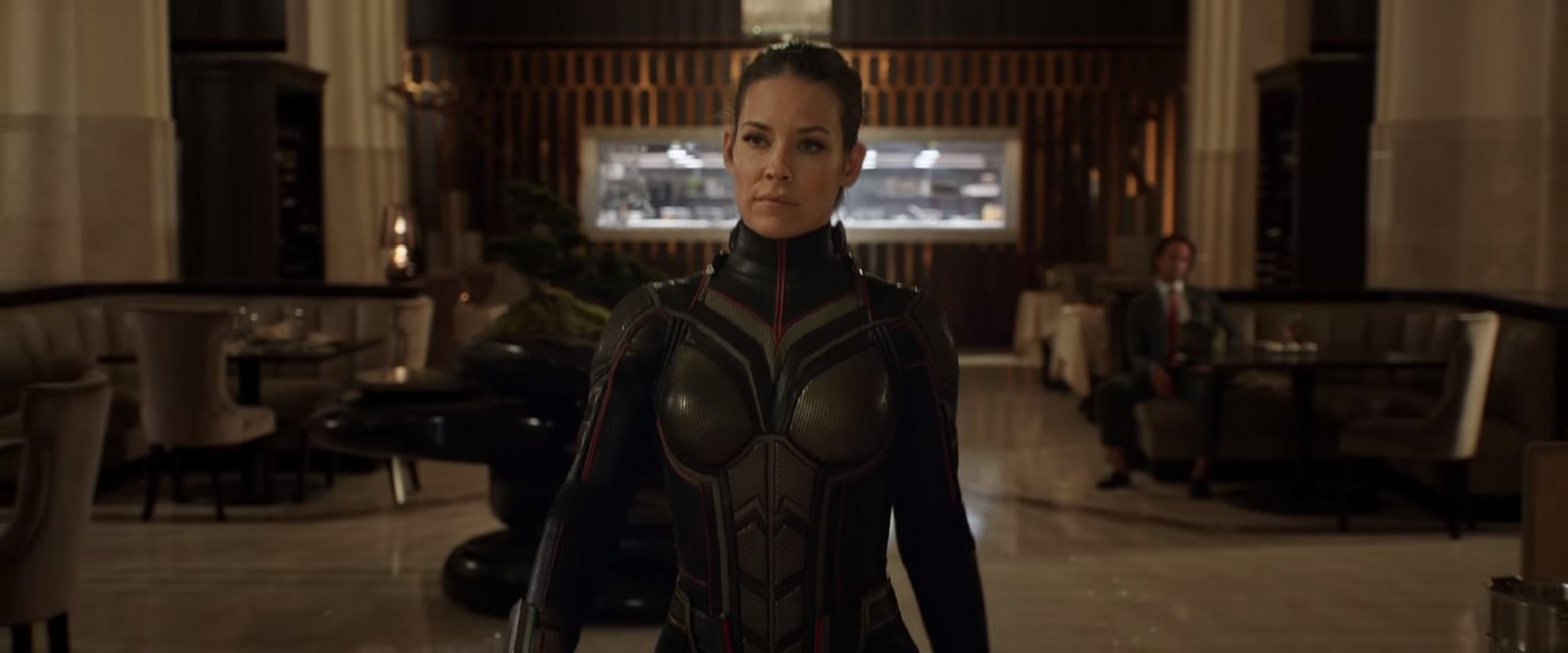 WOOD: I always think you’ve got to deliver what you personally like. If you second-guess, it just becomes a watered-down version and we can always try a completely different version of the scene, but it’s the only time you get to get it to where you personally think it should be. And getting there informs the dialogue you then have with the director justifying decisions or being surprised by something that he says to say, “Oh that changes everything.” I think it’s good for the director to see it in a completely other way: to see someone else’s take on their material, because we’re seeing this stuff for the first time. So we’re just reacting to it pretty much as the audience will. I think it’s really important that you strongly go with your gut. Also, it’s really important to remember your first reaction to the material for the rest of the process that follows.
WOOD: I always think you’ve got to deliver what you personally like. If you second-guess, it just becomes a watered-down version and we can always try a completely different version of the scene, but it’s the only time you get to get it to where you personally think it should be. And getting there informs the dialogue you then have with the director justifying decisions or being surprised by something that he says to say, “Oh that changes everything.” I think it’s good for the director to see it in a completely other way: to see someone else’s take on their material, because we’re seeing this stuff for the first time. So we’re just reacting to it pretty much as the audience will. I think it’s really important that you strongly go with your gut. Also, it’s really important to remember your first reaction to the material for the rest of the process that follows.
As editors while we’re doing these first cuts we’re making a lot of guesses as to where the director’s going to take the movie because it’s all out of order. We’ve read the script, so we know what the story is, but there are lots of little details that we bury in the film as we cut. It may be as simple as the choice of a close up at a particular moment or the choice to play most of the scene on reactions rather than the character speaking. Those things become part of the subtext that inform the characters.
HULLFISH: Do you have issues with the reverse? I’ve found that sometimes directors will fall in love with a shot or performance that they maybe shouldn’t fall in love with.
WOOD: Oh that definitely happens. We’re always talking about killing the babies and Peyton is very good about not getting attached to babies. James Gunn was incredible on the second Guardians, just not being attached to anything, and it is sort of freeing.
HULLFISH: Do you remember any structural changes to the movie that were different than the script that you felt helped and why were those decisions made?
WOOD: There were quite a number. The prologue was completely reshot. As it stands in the finished movie it is all about the moment when Janet Vandyne is lost to the quantum realm. The original prologue was more about setting up the ghost character’s origin — our villain. It was Janet and Hank on a mission that created the ghost character so they were responsible. It was quite a different opening. And it became apparent that it didn’t set up the whole mission for the rest of the film. We felt the prologue needed to be about the moment we lost Janet in the first place.
HULLFISH: I’m fascinated by the difference in what was written, what was shot, and what was edited.
WOOD: Each medium plays differently. Having that exposition, the ghost set-up at the beginning of the film — it seemed logical on the page. When we changed that we still needed the ghost character’s backstory so that had to be worked into a restructuring of the whole big exposition scene in the middle of the film. It meant some big changes.
The quantum realm throughout the final car chase where we actually cut to the quantum realm — that went through a bunch of explorations. The first inclination was to have quite a few visits to the quantum realm throughout the car chase, so it would be a little bit more cause and effect — the real world and the quantum realm — we were trying to make it feel related, but it actually made the third act feel a little bit endless.
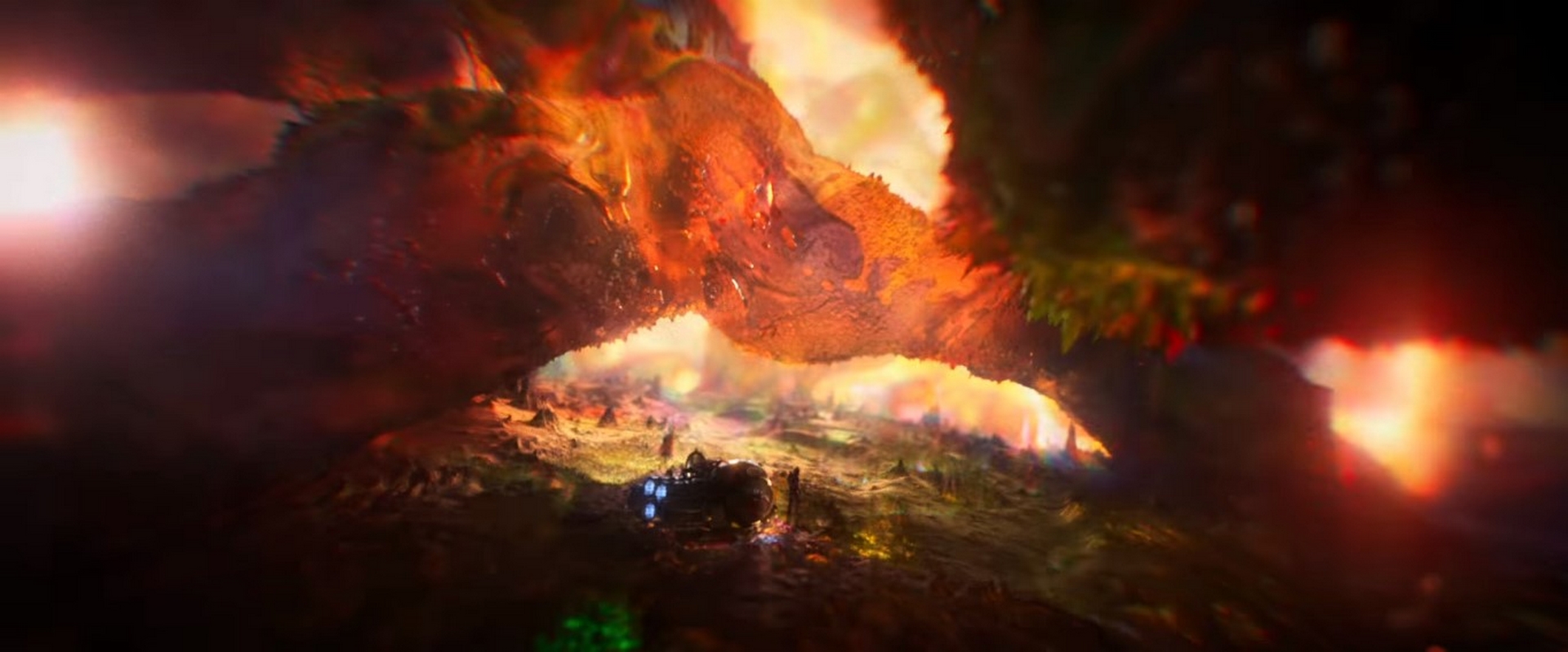 What we ended up doing was playing things in much larger chunks and moving the discovery down — Hank actually finding Janet — til much later in the film. Once we did that, the whole third act started to sing.
What we ended up doing was playing things in much larger chunks and moving the discovery down — Hank actually finding Janet — til much later in the film. Once we did that, the whole third act started to sing.
HULLFISH: It often seems that the scriptwriter wants the cuts between A and B stories to happen much more quickly than they end up being edited in many films.
WOOD: I’m not sure it’s just the screenwriters. My first inclination is to do a little bit more intercutting. But quite often we end up playing things in bigger chunks. So maybe I should learn from that and just start that way.
HULLFISH: It’s hard to tell until you get it to that sweet spot where it sings.
WOOD: It’s a process. It’s a journey every time.
HULLFISH: I’m fascinated by finding out that you needed to move the discovery later in the film. Did that make it feel more like you didn’t have two endings?
WOOD: Yes it did. It made the build to the climax more successful. (SPOILER ALERT) The actual finding of Janet felt like a bigger moment because it’s quite emotional when they see each other again after 30 years. It just did a lot of positive things.
It was a very good suggestion by Steve Broussard, our creative producer. I remember when he suggested that and I reworked the whole third act to do that, and I just went to him and said, “That’s the best suggestion ever! I love it!”
HULLFISH: It’s so interesting that it wasn’t apparent until editing.
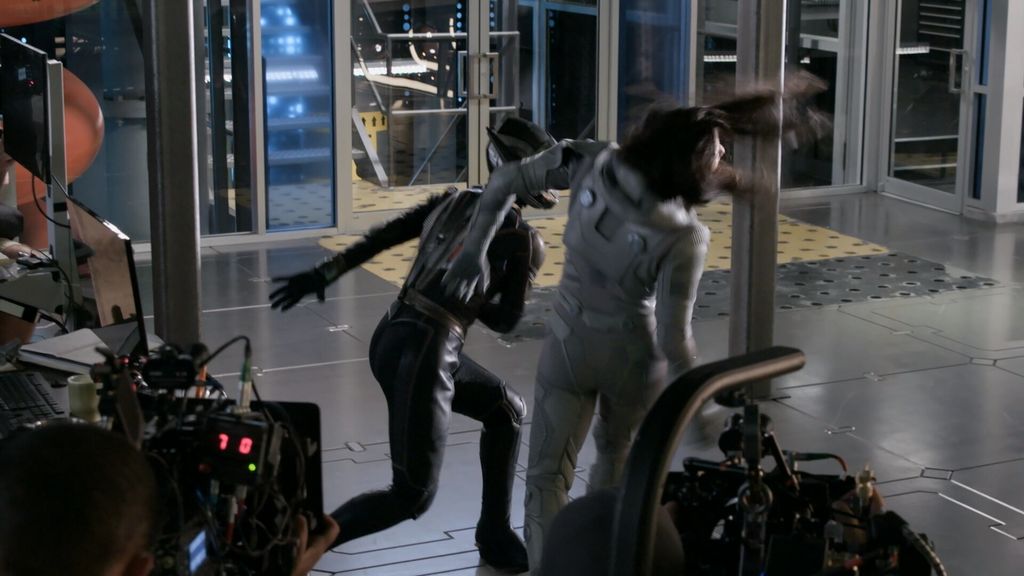 WOOD: That’s right. The movie as it’s shot, any movie as they are shot, play differently than the words on the page. I always think writers deliberately incorporate more dialogue than is necessary because that’s pretty much all you read when you read the script. And so the entire story — every moment in the story — has to be contained in the dialogue, which of course when you actually shoot the movie that balance changes.
WOOD: That’s right. The movie as it’s shot, any movie as they are shot, play differently than the words on the page. I always think writers deliberately incorporate more dialogue than is necessary because that’s pretty much all you read when you read the script. And so the entire story — every moment in the story — has to be contained in the dialogue, which of course when you actually shoot the movie that balance changes.
HULLFISH: Is there a specific instance of that in this movie that you can think of?
WOOD: You’re always trimming out lines of dialogue that play as repetitive. Often the repetitive thing is done deliberately so we can choose at which moment something is said or happens in the film in post. It might be better to hold that information for later or alternatively it may be completely necessary to say it right up front to inform everything that follows. Sometimes you can’t tell that until you play a first cut. It gives us some flexibility to choose how we tell the story.
HULLFISH: Let’s talk a little bit of just about visual effects as you’re editing because of the amount of visual effects in this movie, were you using a lot of previz or how will you be able to cut those scenes that had so much visual effects before the VFX companies started delivering their work?
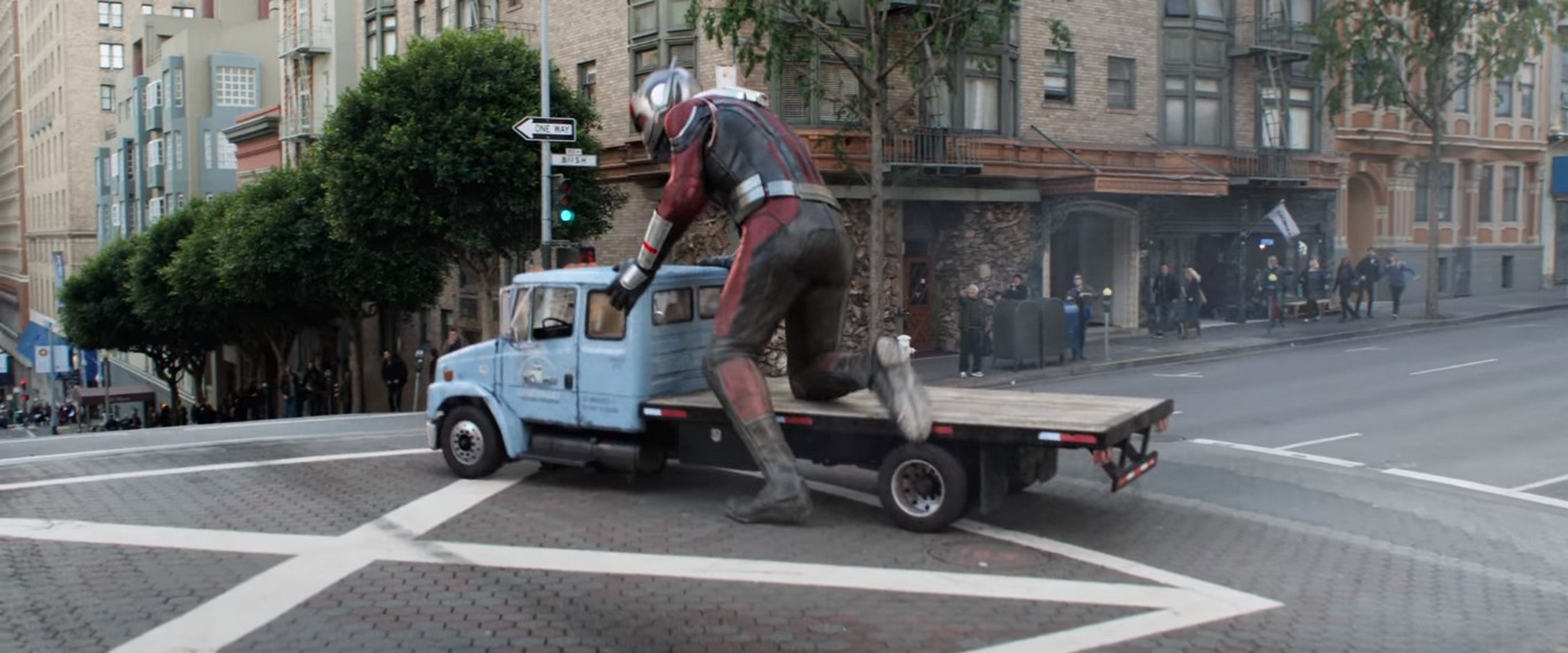 WOOD: Well it depends on the particular visual effects. A lot of the fights have a lot of shrink/grow gags. That’s like that kitchen scene. Dan cut that one, but I had one in the third act, and I stretched cutting that over many days. It was just that complicated and kinda painful. With the shrink I’d have to paint things out and have Animattes all over the place. (An Animatte is a rotoscoping-like effect in Avid.) It was so laborious that I would figure out one of these moves in a day and then I’d go and do something else in the film and the next day I’d go back and do the next move in the scene. That scene, once it was done, I don’t think changed much, but it took me a long time to mock it up and then I gave it to post-viz to do a nicer version of it. But I needed to do it myself first to figure it out.
WOOD: Well it depends on the particular visual effects. A lot of the fights have a lot of shrink/grow gags. That’s like that kitchen scene. Dan cut that one, but I had one in the third act, and I stretched cutting that over many days. It was just that complicated and kinda painful. With the shrink I’d have to paint things out and have Animattes all over the place. (An Animatte is a rotoscoping-like effect in Avid.) It was so laborious that I would figure out one of these moves in a day and then I’d go and do something else in the film and the next day I’d go back and do the next move in the scene. That scene, once it was done, I don’t think changed much, but it took me a long time to mock it up and then I gave it to post-viz to do a nicer version of it. But I needed to do it myself first to figure it out.
HULLFISH: I’m sure Avid was not the best place to have to do that.
WOOD: It’s the only place I know, so it’s the place.
HULLFISH: Let’s talk about assembling all these individual scenes into reels or into longer sequences. Are you only assembling individual scenes into a greater whole when you do a reel, or are you trying to do them every time you’ve got scene 19 next to scene 20 you’re putting them together?
WOOD: As soon as they can be put together. Sometimes there’s a run of scenes that are shot close together, so I would cut them all as a run of scenes. I have the assistants create the scene bins and then as a scene is finished we just put a “scene missing” banner after it if the next scene isn’t the next scene. But join them up as soon as you can!
And I like to watch things down multiple times. It gives me an idea of the flow and then I might do some little trims and whatever.
HULLFISH: Are you revising those scenes as they sit in the strings or are you going back to individual scenes? Or once you’ve got a couple scenes together, then from then on they’re kind of joined and you always do the revisions inside the join?
WOOD: Most of the time I just revise it in the larger sequence. If it’s a major reworking, I’ll duplicate it back into my scene work bin and then put it back so I’ve got a record of how it was. That’s mostly how I would do it. If it’s just trimming up I’ll do that directly in the actual reels.
HULLFISH: As you’re working with Dan Lebental, how much are you interacting with each other or watching each other’s scenes and commenting?
WOOD: All the time. We were doing that all the time we were in Atlanta and up until the point where the workload was ridiculous and we just ran out of time to really do that.
HULLFISH: Is it difficult to have a different partner all the time? On this film it was Dan Lebental. On the last one it was Fred Raskin.
WOOD: Just as you have to learn the director, you’ve got to learn your coeditor. They always bring something fresh to the table. I always learn something on each film I’m on. I can’t remember what it was on this one.
HULLFISH: Craig thank you so much for your time. I really appreciate it.
WOOD: It’s been great talking to you again. Bye.
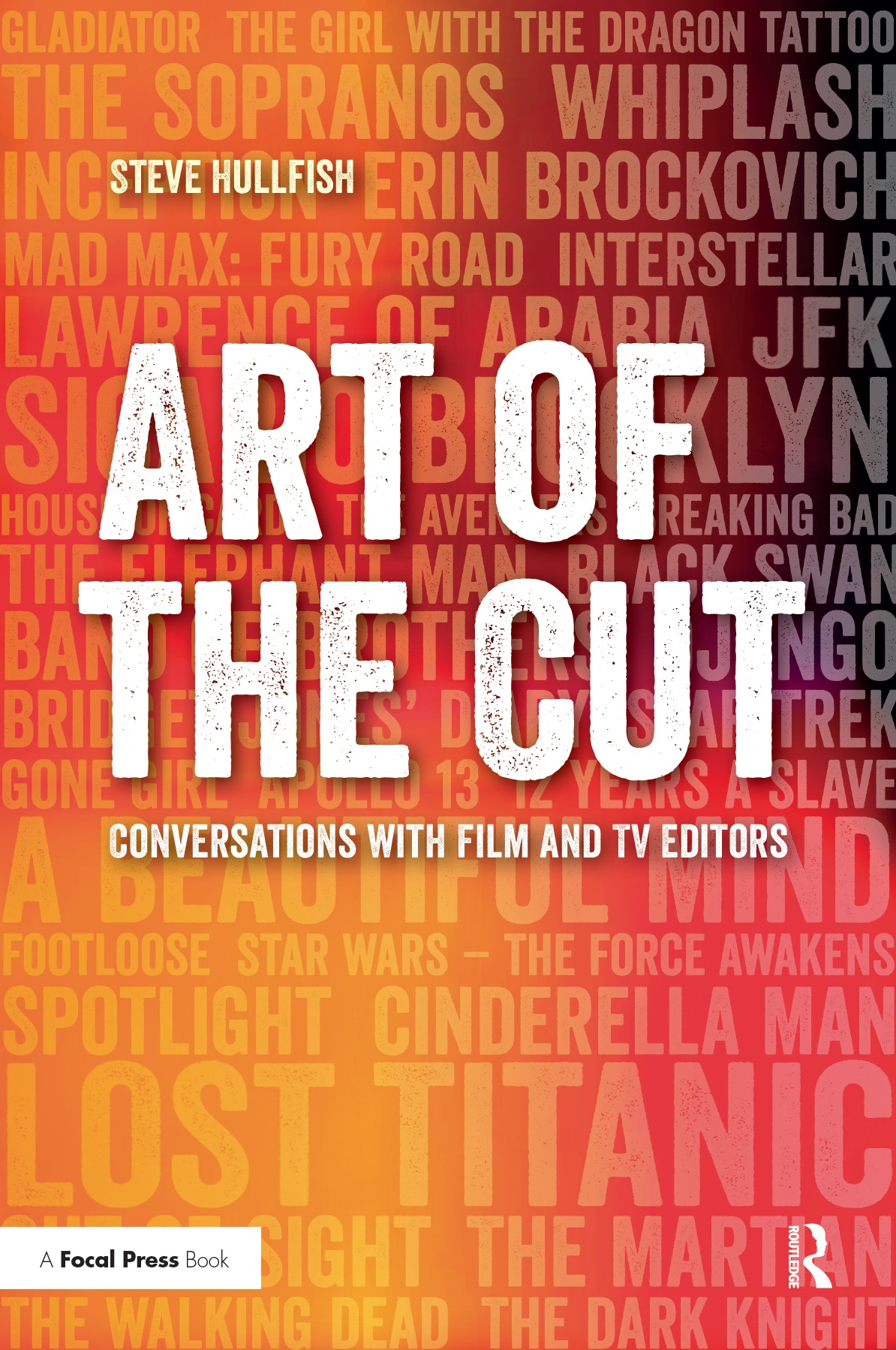 To read more interviews in the Art of the Cut series, check out THIS LINK as well as the site for the sponsor of this series, Frame.io. You can also follow me on Twitter @stevehullfish
To read more interviews in the Art of the Cut series, check out THIS LINK as well as the site for the sponsor of this series, Frame.io. You can also follow me on Twitter @stevehullfish
The first 50 interviews in the series provided the material for the book, “Art of the Cut: Conversations with Film and TV Editors.” This is a unique book that breaks down interviews with many of the world’s best editors and organizes it into a virtual roundtable discussion centering on the topics editors care about. It is a powerful tool for experienced and aspiring editors alike. Cinemontage and CinemaEditor magazine both gave it rave reviews. No other book provides the breadth of opinion and experience. Combined, the editors featured in the book have edited for over 1,000 years on many of the most iconic, critically acclaimed and biggest box office hits in the history of cinema.

Filmtools
Filmmakers go-to destination for pre-production, production & post production equipment!
Shop Now